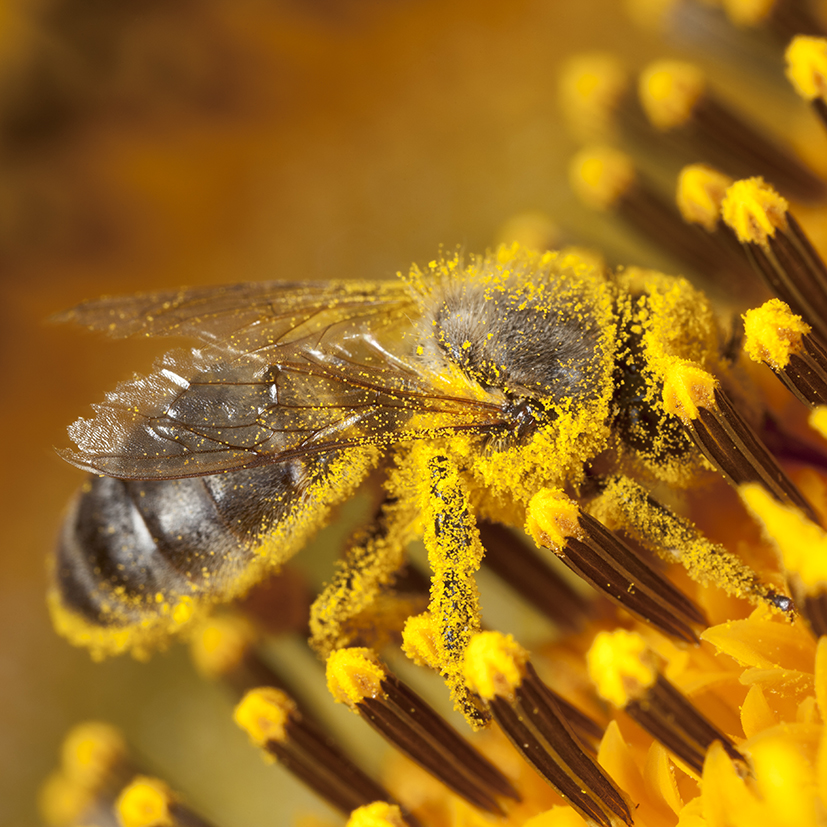This second article of our series, Science from the Field to the Fork, looks at the nature of fruits and their reproduction processes, with a little help from their friends, especially insects.
Science from the field to the fork
This article, the second in a series, Science from the Field to the Fork, has become a regular feature in the Les vergers Boiron magazine (https://www.my-vb.com/fr/magazine.html) and our newsletter. This series, supervised by Corinne Tisné, Project Head, Research and Development Les vergers Boiron, is designed to heighten awareness on the link between science, agronomy, growing practices and the techniques used for the transformation of fruits, and how these factors impact gastronomy, pastry-making and mixology. We began this series with an article on the notion of the terroir and this time, we examine the reproduction of plants and how fruits develop. In our next article, we’ll be exploring the extraordinary diversity of fruits in the world.
N° 2 – Everything you’ve always wanted to know about fruits…
Let’s begin this article with a basic question: what is a fruit? The Oxford Dictionary describes fruit as “The sweet and fleshy product of a tree or other plant that contains seed and can be eaten as food. Botany: the seed-bearing structure of a plant, e.g. an acorn.”
Upstream of its production, again from a botanical point of view, a fruit is the result of the transformation of a flower that has been fertilized (fecundated). In a flower, the male organs or stamen, carry the pollen. This pollen must then be deposited on a female organ or pistil so that it is transformed into a seed. The ovary containing the seed then develops into a fruit.
 1- Self-pollination
1- Self-pollination
2- Pollination by insects
3- Wind-borne pollination
Fascinating interaction between animals and plants.
Pollination is an impressive process that demonstrates the inherent genius of nature and its capacity to adapt. To explain this phenomenon, we kindly ask our non-specialist readers to excuse us for sometimes using some complicated scientific terms, which are rarely used in everyday conversations! Let’s begin by saying that 90% of pollination is achieved through zoogamy, i.e. the intervention of animals at different stages of the plant’s fertilization, with insects being the main go-between in this process (known more specifically as entomogamy), in particular bees and bumblebees. The rest is done mainly by other animals, water and windborne activity.
Flowers provide insects with cover so they can efficiently fertilize a great diversity of plants. They use a wide range of methods to attract insects, including odors, tubular shapes, colors, sweet substances, etc. This works well since 35% of everything we eat or drink is affected by insect behavior, including cocoa, coffee and certain spices!
Some birds are also good pollinating agents (in this case, we refer to ornithophily), in particular in tropical and sub-tropical regions. Hummingbirds are a case in point, since they are capable of hovering in flight, as are sunbirds (small passerines with long beaks). The way it works, for example, is that the Madagascar orchid gives off a strong scent that attracts gnats (also known as midges), who in turn attract a spider that sunbirds like to eat, thereby transferring the pollen.
Chiropterophily is another form of pollination, which refers to the role of fruit-eating bats, attracted by strong odors or the ultraviolet light given off by certain flowers during the night. In tropical food markets, 70% of the fruits come from trees that are fertilized by bats! These include mangoes, bananas, cashew nuts, durian fruit, dates and, above all, agave used for making tequila!
Epizoophily is pollination carried out by squirrels or other rodents, which have very short memory spans and forget where they have stored their winter food reserves or by deer carrying burdock seed burrs in their fur (which was the original idea that led to the development of Velcro). Seeds disseminated by ants are known by the lovely name of myrmecochory.
Wind and water, less precise carriers than animals
Wind also enables certain seeds to be dispersed, but this phenomenon, known as anemogamy is quite random since male seeds can settle on female flowers or next to them, which is not effective.
Water can also carry seeds via raindrops, wetlands or water flow, referred to as waterborne dispersion, the common process in the reproduction of coconut plants, which explains their spread to tropical and subtropical beaches throughout the world.
Certain plants can self-pollinate, but this is contrary to the development of genetic diversity and limits the adaptation of plants to their environment and changes of living conditions.
Finally, certain crops are manually pollinated by human beings, such as pitaya (Dragon fruit), in Central America, which is also fertilized by bats and Sphinx butterflies. Humans, who have to carry out this operation flower by flower, therefore “artificially” fertilizing this fruit, which for example has been introduced into Reunion Island, which has no natural pollen carriers.
The expert’s point of view
It is clear that all pollination methods, either natural or carried out by human beings, are all significantly less efficient than insect and animal interactions with plants.
We may not yet have proven Albert Einstein’s assertion that “if bees disappeared, mankind would only survive for four years,” but it is obvious that we depend primarily on them and other natural pollinizers and that, above all, we must protect bees and animals if we hope to continue producing fruit!
Corinne Tisné, Project Head, Research and Development Les vergers Boiron

